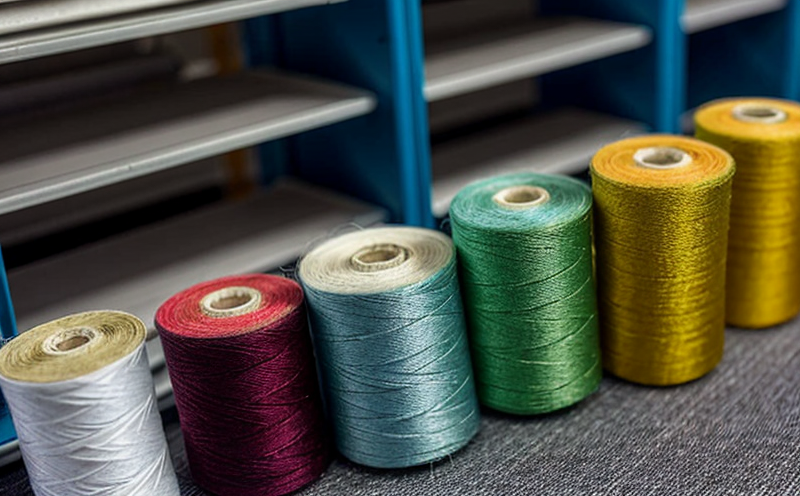Assessing the resistance of materials, such as fabrics, dyes, and plastics, to fading or bleeding over time
The Importance of Assessing Material Resistance to Fading and Bleeding A Laboratory Service You Can Trust
As a business owner in the textile, dye, or plastics industry, you understand the importance of producing high-quality products that meet consumer expectations. One critical aspect of ensuring product longevity is assessing their resistance to fading and bleeding over time. This laboratory service, provided by Eurolab, is essential for businesses looking to maintain brand reputation, minimize waste, and comply with regulations.
What is Assessing Material Resistance to Fading and Bleeding?
Assessing material resistance to fading and bleeding involves evaluating the colorfastness and lightfastness of materials, such as fabrics, dyes, and plastics. This laboratory service tests the ability of materials to withstand exposure to light, water, or other environmental factors without undergoing significant color change or degradation. The assessment helps manufacturers identify potential issues with their products before they reach the market, preventing costly recalls and reputational damage.
Why is Assessing Material Resistance to Fading and Bleeding Essential for Businesses?
Assessing material resistance to fading and bleeding is crucial for businesses operating in various industries, including
Textile and Apparel Manufacturers of clothing, bedding, and towels require reliable assessments to ensure their products retain their color and quality over time.
Dye and Chemical Companies producing dyes, pigments, and other chemicals rely on accurate testing to guarantee the stability and performance of their products.
Plastics and Polymers Producers of plastic materials, such as packaging, containers, and automotive components, need to assess the colorfastness and lightfastness of their products.
The consequences of failing to conduct thorough assessments can be severe
Reputational damage Consumers may lose trust in your brand if your products fade or bleed excessively.
Regulatory non-compliance Failure to meet regulatory standards can result in costly fines, penalties, and even product recalls.
Economic losses Assessing material resistance to fading and bleeding helps prevent unnecessary waste and reduces the risk of expensive rework or replacement.
Advantages of Using Eurolabs Assessing Material Resistance Service
Eurolab offers a comprehensive laboratory service that provides numerous benefits for businesses
Precise Results Our team of experts uses advanced testing equipment and methodologies to deliver accurate, reliable results.
Comprehensive Testing Portfolio We offer a wide range of tests, including colorfastness, lightfastness, water resistance, and more.
Flexibility and Customization Eurolab can adapt our service to meet specific business needs, including bespoke testing protocols and rapid turnaround times.
Key Benefits
Enhanced Product Quality
Improved Brand Reputation
Reduced Waste and Economic Losses
Compliance with Regulatory Standards
Increased Customer Satisfaction
QA Frequently Asked Questions about Assessing Material Resistance to Fading and Bleeding
What types of materials can Eurolab assess?
Our laboratory service evaluates a wide range of materials, including fabrics, dyes, plastics, and more.
How long does the testing process take?
The duration of our testing services varies depending on the specific assessment required. We offer rapid turnaround times for urgent requests.
What types of results can I expect from Eurolabs assessing material resistance service?
Our comprehensive reports provide detailed information on the colorfastness and lightfastness of your materials, including recommendations for improvement.
Can I customize my testing requirements with Eurolab?
Yes! Our team is happy to adapt our services to meet specific business needs, including bespoke testing protocols and rapid turnaround times.
What are the benefits of using a laboratory service like Eurolabs compared to in-house testing?
Our experts have extensive experience and access to advanced equipment, ensuring precise results without the need for costly investment or training.
How can I be sure that Eurolabs assessing material resistance service is compliant with regulatory standards?
Eurolab adheres to strict quality control measures, including ISO 17025 accreditation, to ensure our services meet international standards.
Conclusion Trust Eurolab for Your Assessing Material Resistance Needs
In conclusion, assessing the resistance of materials to fading and bleeding over time is an essential service that ensures product quality, brand reputation, and regulatory compliance. With Eurolabs comprehensive laboratory service, businesses can
Enhance product quality
Improve brand reputation
Reduce waste and economic losses
Comply with regulatory standards
Increase customer satisfaction
Choose a trusted partner for your assessing material resistance needs contact us today to discuss your requirements and learn more about our services.
-
Testing the ability of consumer products to maintain color under various environmental conditions
-
Simulating exposure to light, heat, and humidity to evaluate how colors remain stable in different products
-
Testing the impact of washing, drying, and other cleaning methods on color retention in textiles
-
Evaluating the performance of pigments and dyes used in consumer goods for color stability
-
Simulating exposure to common household chemicals to assess the impact on colorfastness
-
Testing the ability of colors to remain stable under UV light exposure in outdoor products
-
Assessing the potential for color bleeding or transfer between materials in multi-material products
-
Testing the resistance of consumer goods to fading when exposed to sunlight or artificial light
-
Evaluating the color durability of products like clothing, accessories, and home furnishings
-
Testing for discoloration or fading in items subjected to repeated use and washing
-
Assessing the effect of high-temperature environments on color stability in materials
-
Testing how products hold up to repeated abrasion or rubbing without losing color quality
-
Simulating prolonged exposure to extreme environmental conditions like saltwater or chlorinated water
-
Evaluating the effect of sweat, oils, and other bodily fluids on the color stability of products
-
Testing for color retention in synthetic and natural fabrics used in clothing, upholstery, and accessories
-
Assessing how colorfastness impacts the perceived quality and longevity of consumer goods
-
Testing the durability of printed or dyed designs in products like clothing, toys, or household items
-
Evaluating the effectiveness of protective coatings or treatments in enhancing color retention
-
Verifying that products meet colorfastness standards for the intended market
-
Testing color consistency across different production batches to ensure uniformity




